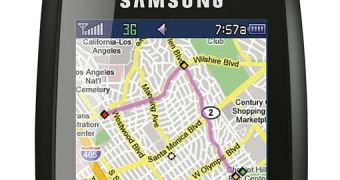A recently published research from Strategy Analytics shows that the shipments of smartphones that include GPS capabilities will grow by 34 percent during the ongoing year all around the world. For comparison, last year, the shipments reached 57 million units, while estimations point towards a number of 77 million that will be shipped in 2009.
According to the research firm, the wide adoption of GPS capabilities in smartphones is mainly based on the fact that consumers are also accepting more and more portable navigation devices both in Europe and the United States, as well as on the increased availability of mapping applications coming from mobile phone makers like Nokia, Apple or Research In Motion.
“We forecast worldwide GPS smartphone shipments will grow a healthy 34 percent from 57 million units in 2008 to 77 million units in 2009. GPS smartphones, such as the Nokia N97 and Apple iPhone, are a high-growth segment that continues to expand even during the current, tough economic times,” Joanne Blight, Navigation director at Strategy Analytics, stated.
As many of you might already know, last year, GPS-capable mobile phones also saw a great adoption increase. On a global scale, the number of mobile phones that were shipped last year with GPS receivers was estimated at 78.0 million units, which marked a 178.6-percent increase the past twelve months alone (all GPS-enabled GSM/WCDMA handsets were included in the estimation that came from Berg Insight).
Neil Mawston, Wireless director at Strategy Analytics, added that there were two main factors that influenced the adoption of GPS smartphones at such a high rate. “First, there is widespread consumer acceptance of portable in-vehicle navigation devices from companies such as TomTom and Garmin in Europe and the United States. Second, mobile navigation services are improving. There is an increasing presence of mapping applications among major smartphone vendors, such as Nokia Maps, Apple Google Maps and Blackberry Maps.”

 14 DAY TRIAL //
14 DAY TRIAL //